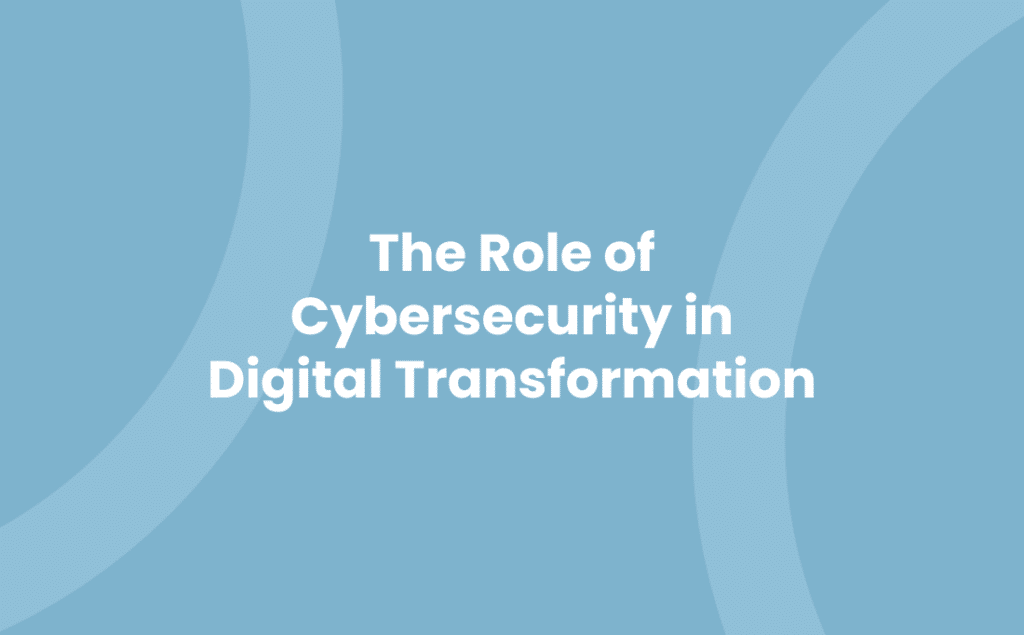Navigating the digital landscape is no walk in the park. It’s a thrilling journey, filled with opportunities and risks alike. As your organisation undergoes digital transformation, you’re not just adopting new technologies, but also opening the door to potential cyber threats.
Cybersecurity, in the realm of digital transformation, isn’t an afterthought. It’s a critical component that ensures the safety and integrity of your digital assets. In this article, we’ll delve into the intricacies of cybersecurity in the digital transformation era. We’ll explore how to fortify your digital fortress while reaping the benefits of modern technology. So, buckle up for an enlightening ride into the world of digital transformation cybersecurity.
Understanding Digital Transformation in Business
Digital transformation in business refers to your company’s strategic adoption of digital technologies. This process invigorates traditional business operations with a digital vibe, enhancing efficiency and delivering superior customer experiences.
For instance, consider paper-based invoicing. It’s slow, labour-intensive, prone to human error and hinders timely decision making. However, an automated, digital invoicing system dramatically improves this scenario. It quickens the sales-to-cash cycle, reduces manpower, eliminates human errors, and facilitates real-time reporting. This example illustrates the essence of digital transformation in business.
Your business, like others, capitalises on digital technologies for survival, competitive advantage, or business expansion. Yet, there’s a catch. The greater your dependency on digital platforms, the higher the cybersecurity threats your business faces. Enter Digital Transformation Cybersecurity.
Digital Transformation Cybersecurity
Cybersecurity, in the digital transformation context, protects your digital infrastructure‚ hardware, software, and data‚ from malicious attacks, damage, or unauthorised access. It’s integral to your digital journey, considering the increasing cybersecurity threats in today’s digital business environment.
To illustrate, imagine your business’s valuable data‚ finances, customer details, business secrets‚ trapped in a cyber-attack. It may lead to severe financial loss, damage to your brand’s reputation, and legal issues. Therefore, safeguarding your digital transformation with robust cybersecurity measures makes absolute business sense.
As a result, companies must consider integrating cybersecurity solutions early into their digital transformation strategy. It helps prevent potential cyber threats, rather than combatting them later, likely when it’s tougher and costlier.
While cyber threats can still penetrate even the most fortified digital security system, having robust cybersecurity controls mitigates the risk. It aids in quickly identifying the threats, limiting the damage, and ensuring swift business recovery.
So, understanding digital transformation and its cybersecurity implications offer a dual advantage for your business. First, it maximises the benefits from your digital transformation efforts. Second, it enhances your preparedness against the growing cybersecurity threats prevalent in the digital business landscape. Therefore, digital transformation cybersecurity appears significant for businesses today.
The Inevitability of Digital Transformation
Embracing the inevitability of digital transformation entails harmonising digital prospects with cybersecurity vigilance. Regardless of sector, digital transformation infiltrates your business agendas, presenting opportunities for growth and innovation. However, the pace of such advancements begs for rigorous safety measures.
Enter digital transformation cybersecurity – an anchor to secure the digital assets of your organisation. Integrating cybersecurity solutions at the early stages of digital transformation not only deters cyber threats but also underlines the importance of having a secure digital ecosystem.
The digital solution is not restricted to new or trendy business tools. It encompasses a broader spectrum, from streamlined workflow automation to advanced data analytics. All bear significance in crafting a competitive edge in today’s digital transaction scene.
Yet, without proper digital security measures, the transformation journey gets rocky. It’s like setting a stage with no security personnel – sound absurd, right? Cybersecurity flaws can lead to potential data breaches, disrupting the trust of both clients and stakeholders. Therefore, a comprehensive digital security strategy becomes indispensable.
Diligence is an essential trait in securing digital assets. Bearing in mind that cyber predators exploit every vulnerability, continual updates and upgrades are vital. No cybersecurity solution can claim total invulnerability, but a rigorous scrutiny can limit the risk, ensuring the smooth operation of digital transformation initiatives.
In a nutshell, the inevitability of digital transformation brings along a wave of cybersecurity essentials that, if neglected, could sink your digital ship. Therefore, always be vigilant, and remember that a stitch in time saves nine – especially when cybersecurity is the thread that holds your digital transformation tapestry together.
Looking into Cybersecurity in the Era of Digital Transformation
In this digital epoch, protection services for your digital assets aren’t merely a bonus touch – they’re core to maintaining secure operations. You can’t talk about the digital transformation without including cybersecurity in the mix. It’s like tying up your shoe laces and expecting them not to come undone while you sprint across a field with potholes.
- Relevance of Cybersecurity: In the present age, companies are integrating advanced solutions in their digital transformation journey. In such a scenario, cybersecurity plays an integral role akin to a virtual fence that safeguards against cyber threats. As business owners, ensuring your digital land is secure exemplifies proactive risk management instead of reactive damage control, akin to hiring qualified staff on the front lines to maintain order during an event.
- Cybersecurity in the Business Landscape: Small and Medium Enterprises (SMEs) across the UK are identifying and implementing cybersecurity measures in their digital transformation journey. This defensive strategy not lightens the digital load but also propels the transformative process effectively.
- Mitigating Risks with Cybersecurity: Adapting to digital transformation is not a walk in the park. With every step of adaptation, potential risks follow. Thanks to cybersecurity, these risks can be mitigated to a considerable extent. Imagine boarding a ship without life jackets – that’s how precarious it is for digital businesses without cybersecurity measures.
- Collaborative Relationship: Digital transformation and cybersecurity aren’t segregated units. They both form a union of mutual benefit. Think of them as having a symbiotic relationship akin to bees and flowers, with each one reinforcing the other leading to a systemic balance.
For owners of SMEs across the UK, optimising digital business operations goes hand-in-hand with a comprehensive understanding of digital security measures. In the era of digital transformation, cybersecurity serves an integral position‚ it’s the DNA within every strand of your transformed business. It’s the unseen guardian, ceaselessly diligent, always on the lookout for potential threats. The digital era might appear daunting but remember, your business’s digital transformation and integrated cybersecurity measures work in harmony, getting you closer to a secure digital horizon.
Expanding Role of Cybersecurity in Digital Transformation
Given the rise of digital advancement, cybersecurity has become more than just a supporting player. It’s transformed into a pivotal element in the chronicles of digital transformation. Focusing on the expanding role of cybersecurity redirects attention to three critical zones: safeguarding systems, building resilience, and facilitating innovation.
- Safeguarding Systems: Cybersecurity’s role requires it to act as a shield‚ that’s not just for data, but entire digital systems. This includes everything from your daily operations, customer interfaces, to your less-tangible brand reputation. You don’t invite yourself into the chaos of cyber threats. You overlap digital transformation with cybersecurity, making sure your digital journey doesn’t transform into a cyberspace calamity.
- Building Resilience: Cybersecurity hurdles don’t vanish with a single manoeuvre. Threats evolve, and so should your defences. This implies not just initial protection during digital shifts. It means architecting resilience in the face of potential cyber threats. Cybersecurity is the mainstay, providing a sustainable digital umbrella for your regardless of the storm.
- Facilitating Innovation: You might associate cybersecurity solely with protection, but its remit extends to fostering innovation. By holistically incorporating cybersecurity into your digital transformation approach, you facilitate an environment that enables bold strides and not just safe steps. Cybersecurity serves as your ticket to stir up innovation without provoking vulnerability.
Building a sturdy digital future can seem like threading the needle in today’s complex cyber landscape. But with cybersecurity taking an ever-expanding role, it’s not something that falls off the radar. Instead of perceived friction, cybersecurity becomes the frictionless bridge to a digital future. It’s the pivot that turns your digital transformation from a mere strategy into a strong, secure reality. Beware of treating cybersecurity as a sidekick‚ it’s a co-pilot on your digital voyage.
Case Studies: Cybersecurity Success in Digital Transformation
To appreciate how cybersecurity can drive digital transformation success, consider these compelling case studies. Here, businesses have nimbly leveraged digital security measures to enhance their digital evolution.
- Fortune 500 Financial Company: A leading financial enterprise in the Fortune 500 list faced severe cybersecurity risks. However, they adopted a holistic approach to digital security during their digital transformation initiatives, offering a remarkable instance of cyber resilience. The firm integrated cybersecurity practices from the onset, effectively securing their digital infrastructure. Consequently, incidences of compromised digital assets reduced by 35% while digital operations efficiency increased by 60%. They stood as a testament to the potent synergy of digital transformation and cybersecurity.
- Acme Tech Inc.: This tech giant navigated the challenging landscape of digital transformation with remarkable ease and security, illustrating the vital role of cybersecurity in digital evolution. Acme Tech Inc. developed an advanced security analytics tool as part of their transformation strategy, enabling real-time threat detection and mitigation. Consequently, they recorded an 80% reduction in security breaches over a year, accelerating their transformation efforts.
- Public Healthcare Institution: A renowned public healthcare provider had to speed up its digital transformation efforts due to the pandemic. Balancing rapid transformation with stringent cybersecurity measures, the institution exemplifies digital transformation cybersecurity. They rolled out robust telehealth services backed by advanced encryption and secure patient data management practices. The result? A seamless digital healthcare experience with zero data breaches.
From these case studies, it’s clear that cybersecurity is not a supplementary, but an integral part of digital transformation. Securing digital assets and infrastructures from the beginning safeguards businesses from unforeseen threats, amplifies efficiency, and streamlines the transformation process. Therefore, digital transformation and cybersecurity are inherently intertwined, their interconnectivity dictating the success of a firm’s digital journey.
Future of Digital Transformation and Cybersecurity
Progressingly, the intersection between cybersecurity and digital transformation becomes increasingly crucial. As we’ve seen, robust cybersecurity measures drive digital transformations, ensuring processes run smoothly, and assets remain secure.
Pertaining to the future, organisations must stride forward, acknowledging continuously changing landscapes. This involves adapting swiftly to emerging threats while leveraging new opportunities ushered in by digital trends. Artificial Intelligence (AI) and Machine Learning (ML), trends that currently dictate the pace of digital transformation, offer a snapshot into this future. These technologies influence advanced threat detection systems, identifying anomalies and predicting potential security breaches, thus enhancing digital security.
5G technology also looms large on the horizon. This technology holds the promises of increased data speed and network capacity. However, it avenues new points for potential cyber-attacks, thereby raising the stakes for digital transformation cybersecurity.
Internet of Things (IoT) devices multiply, painting another aspect of the digital transformation future. The greater the number of connected devices, the larger the surface area for potential attacks. Mitigating security risks in this growing ecosystem requires proactive cybersecurity measures integrated into digital infrastructure from the outset.
Additionally, data privacy regulations continue shaping the future of digital transformation and cybersecurity. Key legislation such as the General Data Protection Regulation (GDPR) sets stringent rules on data handling and informs organisations’ cybersecurity strategies.
In these future instances, the amalgamation of cybersecurity with digital transformation bolsters strategic decisions around secure digital practices. As digital landscapes continuously evolve, it provides a cushion against unknown cyber threats.
Hence, the future of digital transformation is exciting but challenging. It commands your preparedness and adaptability, keeping pace with advancing trends and unceasingly adjusting cybersecurity strategies. Consequently, digital transformation cybersecurity isn’t a static concept – it evolves with each technological advancement, every emerging threat, and unfolds new norm. Embrace this dynamism, and you’ll secure your digital future.
Conclusion
Navigating the digital landscape, it’s clear that cybersecurity isn’t just an add-on, but a vital part of your digital transformation journey. It’s about building resilience and fostering innovation while keeping your systems secure. Looking ahead, the convergence of digital transformation and cybersecurity will only become more pronounced. You’ll need to adapt to shifting landscapes, harness the power of AI and ML for threat detection, and tackle the complexities of 5G and IoT. Plus, staying compliant with regulations like GDPR is non-negotiable. So, remember, integrating cybersecurity into your digital transformation strategy is not just about protection; it’s about making strategic decisions that put you ahead of the curve in this ever-evolving digital world.


